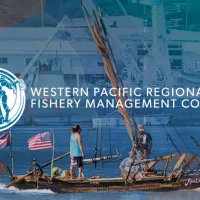
Science advisors to the Western Pacific Fishery Management Council expressed deep concerns at their meeting this week about the potential negative unintended consequences of adding more fishing limits in the U.S. Pacific Remote Islands (PRI).
The Council’s Scientific and Statistical Committee (SSC) was tasked with evaluating current fishing regulations in the PRI.
SSC members reaffirmed their recommendation from the September meeting that existing regulations are sufficient to meet the goals and objectives of the proposed PRI National Marine Sanctuary.
The SSC found no scientific evidence to support additional fishing regulations and cautioned further limits on the U.S. fleet could have negative impacts on the region.
“The burden of conservation will continue to fall on the shoulders of the Pacific Island communities, and additional regulations may limit future economic opportunities,” said SSC member Debra Cabrera, University of Guam (UOG).
“I would not like to see any interruptions to ongoing data collection efforts in the area like biosampling and tagging that is dependent on the fishery,” added SSC member David Itano, fisheries consultant.
SSC member Steve Martell, Sea State Inc., noted, “Further restrictions could displace fleets into areas that may have higher bycatch rates or limits, thereby causing a larger adverse effect on protected species populations.”
The NOAA Pacific Islands Fisheries Science Center published a technical memorandum this month estimating the economic contributions of U.S. commercial fisheries to American Samoa. The report documents that hundreds of millions of dollars and thousands of jobs are directly or indirectly supported by commercial fisheries. SSC members emphasized a loss of fish supplying the cannery could be devastating, and closing waters from 50-200 nm will only further disadvantage the U.S. fleet that is already on shaky footing.
SSC members had significant concerns about the equity and environmental justice implications that the proposed sanctuary and existing marine national monuments impose on the underserved community of American Samoa, and the broader Pacific Islands Region.
“I’m not only worried about the lack of U.S. footprint in those waters and the risk of foreign fleet incursions, but also the inequity in terms of Pacific Island communities who are disproportionately affected and bear the brunt of the impacts,” said SSC member Frank Camacho, UOG.
Another member noted there has been substantial outcry in American Samoa over the proposed sanctuary, which is viewed as a major threat to the economy.
SSC Chair and general counsel Jim Lynch said, “Additional fishing regulations would be counterproductive to efforts to get better data from fishing communities that are disadvantaged and rely on subsistence or fisheries to make a living.”




